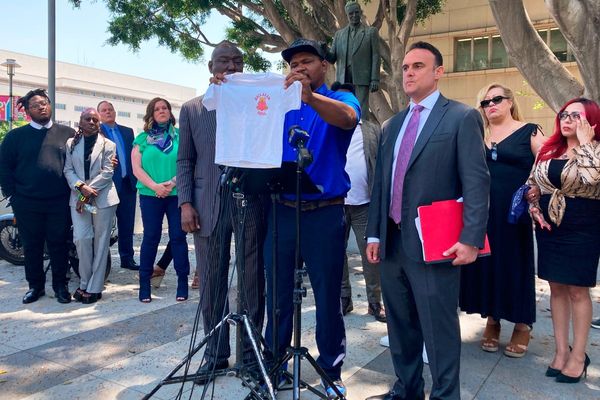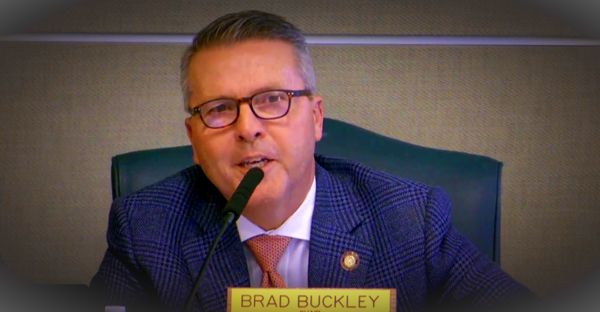When the 2020 census found that tiny McNab, Arkansas, had lost more than half its residents, Mayor James Conway went door to door and found 45 people in the rural town instead of the 30 reported by the census.
“The census is showing that we went down from 68 (in 2010) to 30 people, and that is incorrect,” Conway said. As a result, the city’s monthly revenue-sharing payment from Arkansas dropped to less than $209 from about $457 last year.
Two years after census 2020, many cities and states say the count wildly underestimated their residents, costing them significant federal and state money for the social services and infrastructure their areas need. The numbers also have created confusion in drawing new voting districts, potentially leaving some areas with less political power than they should have in state legislatures and Congress.
While the U.S. Census Bureau has created programs to fix the errors, many state and local officials say they are not sufficient.
The bureau’s Count Question Resolution program allows tribal, state and local governments to ask the Census Bureau to review their counts for errors. It already has drawn complaints from 20 places in Arkansas, Georgia, Iowa, Kansas, Mississippi, Nebraska, New York, Ohio, Tennessee, Washington and Wisconsin as well as Puerto Rico. It is accepting challenges through June 2023.
And a new Census Bureau plan called the Post-Census Group Quarters Review allows state and local officials to flag errors in counts of people living in institutional settings such as college dorms and prisons. Cities and states have only until April 21 to submit comments on the plan and can submit possible errors for review between June of this year and June 2023.
The new plan has drawn 34 detailed complaints from cities, states and their advocates, many asking for a way to correct errors that should have been picked up during review processes that were canceled because of the coronavirus pandemic. The new program will help fix institutional counts for future estimates, which the bureau issues annually between its full census each decade. Any corrections won’t, however, affect official counts used for redistricting.
New York City, the nation’s largest at 8.8 million, was mostly satisfied with its population count, but the institutional resident numbers need to be fixed, said Peter Lobo, director of the city’s population division.
“The Census Bureau gutted the count review process that would have allowed states to update 2020 census group quarters information before finalizing the counts,” Lobo said. Some states have complained that, in the rush to finish the delayed count during the pandemic, they did not get enough time to review counts of group living quarters, such as prisons, for errors.
The National Urban League, which sued to stop an early end to the count in 2021 and continues to get briefings on efforts to make the counts more accurate, wants a thorough review that includes more than institutional settings.
“The review program must be as broad and flexible as possible to overcome funding repercussions that states and localities will experience each year for the remainder of this decade,” said Jeri Green, Urban’s 2020 census senior adviser, in a statement.
She added that local officials need help to make these challenges in places larger than McNab, where a mayor can’t count residents single-handedly.
“The bureau should not place all the burden of getting the count right on elected officials, many of whom don’t have the resources or technical capabilities to challenge their count,” she added.
The mayor of Smithville, Mississippi, had similar complaints about an unexpected drop in population count and filed a comment on the group quarters review, though he didn’t cite any institutional population concerns.
“According to the most recent census, we have lost half our population, which cannot be true,” wrote Mayor Phil Goodwin, who was elected as an independent. The census counted 509 people in the town, down from 942 in 2010. The town was devastated by a 2011 tornado but counted 645 residents afterward and has grown since, Goodwin wrote.
Some states, including Massachusetts and Minnesota, offer advice or data services to help track down census mistakes for small towns that want to challenge census results. Others, such as Mississippi, don’t have the staff to do a lot of technical work but pitch in with general advice on deadlines and paperwork.
Anne Cafer, director of Mississippi’s state data center at the University of Mississippi, said her office is committed to helping communities navigate how to challenge census counts. “Our assistance is often limited to helping them understand the process, the deadlines and any public data that might be necessary for the application.”
In comments on the counting of group living quarters, many cities complained about seemingly obvious errors that came in the early weeks of the pandemic in spring 2020, when students were leaving dorms and apartments to return home for virtual classwork. The Census Bureau said the students should be counted in their college towns where they usually live, but, in the confusion, many colleges and universities apparently reported empty dorms for the 2020 counts.
Bloomington, Indiana, home of Indiana University, was counted at fewer than 80,000 residents but expected as many as 90,000, based on increasing school enrollment and tax collections, the city wrote in an unsigned comment. The count included a 9% drop in a student housing area where apartments have expanded by 4% with few vacancies, the city said.
“Cities should not be punished for the unprecedented pandemic. A correct census is critical to Bloomington having the resources to ensure the safety and health of its citizens,” the comment stated.
In East Lansing, Michigan, home of Michigan State University, City Manager George Lahanas wrote that the city lost population in the census count even though thousands of housing units were added, university enrollment was higher and student housing was nearly 100% full on census day.
Officials in State College, Pennsylvania, the home of Penn State University, think as many as 5,800 people went uncounted in buildings that should have been treated as dorms with temporarily absent students, according to a comment filed by Borough Manager Thomas Fountaine.
Dutchess County, New York, reported issues with colleges — including Bard, Marist and Vassar — that received unclear guidance and failed to report hundreds of temporarily absent students, as well as apparent misplacement of the Fishkill Correctional Facility, which was blamed for a population decrease in the city of Beacon.
“The errors are large enough to negatively impact finances for the involved municipalities, especially the Town of Red Hook and Village of Pawling where the missing students account for roughly 10% of the population,” wrote county executive Marcus Molinaro.
In Elon, North Carolina, where fully half the population is students at Elon University, a shortfall of 850 in the count will cause “extremely significant” drops in state sales tax revenue distributed by population, wrote Pamela DeSoto, the assistant town manager.
There were similar complaints from officials in other college towns: Tempe, Arizona, Atlanta and Athens, Georgia.
One census enumerator submitted a public comment on the pandemic chaos that made counting harder in the Kalamazoo area of Michigan, which includes Western Michigan University.
“I have worked previous census counts and this was by far the worst,” John McNeill wrote. Colleges helped with dorm populations, but there was no way for enumerators to find students who left rental housing temporarily, McNeill wrote, and counters faced unusual hostility.
“We got refusals from folks on the left, folks on the right, Native and African Americans and recent immigrants included,” McNeill wrote. “The political climate was not at all conducive to someone from the government coming around and asking intrusive questions about living arrangements.”
Other small towns complained of undercounts: Etowah, Arkansas, said census forms were sent back by the local post office because of address problems, causing a population drop that doesn’t square with utility bill records. Alison Wright, research specialist at the Arkansas state data center, said while her staff is limited, the center is available to help cities investigate counting issues.
In McNab, Mayor Conway told Stateline the Census Bureau promised to send him paper maps so he can mark homes that were missed in the count.
“The data was collected in the time when the pandemic was at its highest, so I’m not sure if the citizens filled out the survey or not,” Conway said. "But I have gone house to house to get a correct population count.”
———







